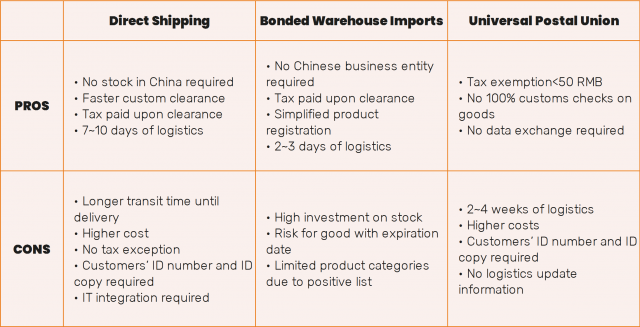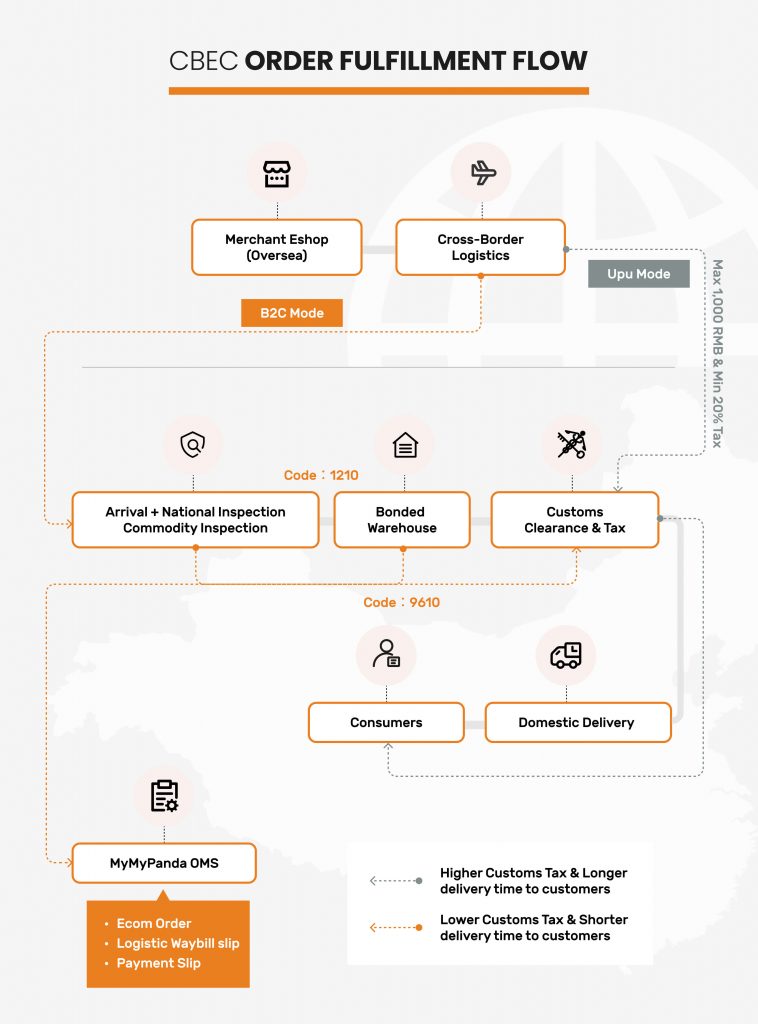China consumer purchasing power continues to grow and Gen Z population has been a key segment driving ecommerce boom. Consequently, the China cross-border eCommerce (CBEC) trade is developing rapidly as more and more overseas brands target the tremendous potential Chinese market. When overseas ecommerce sellers ship their goods direct to China customers, the complex customs regulations and taxation often create unforeseen challenges – long delivery time, package detained or lost and high shipping cost. These bad experience raised questions for brands on reliability and transparency of China regulations when they consider CBEC logistics solutions. This article provides some answers to China logistics, customs and tax compliance practices. The aim is to help companies build an effective cross-border ecommerce strategy by addressing some common questions:
- Can my ecommerce website sell goods directly to Chinese mainland customers online?
- How long does it take for Chinese consumers to receive the products after placing an order on our website?
- How are goods taxed with different shipping options?
- How should I choose the right logistics solution for my ecommerce?
While there are different options for overseas companies to ship products directly to Chinese customers. Nevertheless, they can largely be grouped into three mainstream approaches when you use CBEC logistics solutions in China.
- Compliance: Provide brands with a way to enter the Chinese market in line with Chinese laws and policies.
- Shorten logistics time: Choosing the most suitable logistics method to shorten the logistics transportation time.
- Reduce package loss: Fast and reliable logistics help brands reduce the loss of goods.
- Improve service experience: Provide timely feedback on customs clearance and logistics to customers and brands.
- Reduce labor costs: Choosing the right CBEC service model avoids various problems caused by logistics after sales, and also saves labor costs.
- Reduce tax costs: Adopt the most reasonable CBEC logistics solutions to get the maximum tax relief benefits and reduce the cost of taxes.
1. B2C: CBEC-Direct Shipping
This CBEC service model has been promoted by China government since 2014. Some logistic providers will handle the customs tax on behalf of the merchants. The parcels will be consolidated to bulky goods and freight forwarded to a China bonded trade zone for swift custom clearance. Since the products are stored in merchants´ oversea warehouse, there is no initial shipping costs until China customers placed orders on the overseas ecommerce websites.
2. B2C: CBEC- Bonded Warehouse Imports
It's the CBEC service model that is most ideal for overseas companies to sell products in China via cross-border e-commerce without physical retail presence. Brands will ship their stocks to designated bonded warehouse for customs clearance. Prior to that, you need to register your products with customs for compliance. With this approach, not only can you postpone import duty and VAT charges, but also deliver products to the customers within a few days.
3. C2C: Universal Postal Union (UPU)
Universal Postal Union is a service for Chinese to send personal items by post. This is widely used by global eCommerce which did not integrate with formal CBEC platform. Packages over certain permissible value will be returned or withheld by Customs indefinitely until goods are properly taxed and paid by customers before they can picked it up.
So how can you choose the right CBEC logistics solution that suits your type of business before shipping direct to China consumers? Below table provides an overview of the strengths and weaknesses for the different cross-border ecommerce options:
While each of the cross-border ecommerce solution has its own advantages and disadvantages, MyMyPanda CBEC platform will provide the most suitable options according to the type, weight and price of the products; and your business needs. Ultimately, our goal is to provide low cost and fast solution for you to access the China market; and ensure the overall brand experience is also delightful for your customers.
MyMyPanda CBEC logistics solution process:
- Consumer browse overseas ecommerce website, checkout & complete payment.
- With UPU mode, merchant ship directly to customers with tax free declared. But China Customs may hold products and notify consumer to pay tax(20% or 50%) for clearance and products may take from 2 to 4 weeks before package is cleared and delivered to customers.
- With B2C mode, products are declared with tax paid properly (9.1% or 23.1%) and shipped in advance for inspection.
- When customers make a purchase, MYMYPANDA CBEC platform will initiate custom clearance and tax compliance via electronic submission of the three documents. (ie Ecommerce Order, Payment Slip & Logistic Waybill Slip)
- Once the customs is cleared, the package will be delivered to the customers within 3 days.
Key Benefits When You Choose MyMyPanda CBEC Platform:
- Compliance: Provide brands with a way to enter the Chinese market in line with Chinese laws and policies.
- Shorten logistics time: Choosing the most suitable logistics method to shorten the logistics transportation time.
- Reduce package loss: Fast and reliable logistics help brands reduce the loss of goods.
- Improve service experience: Provide timely feedback on customs clearance and logistics to customers and brands.
- Reduce labor costs: Choosing the right CBEC service model avoids various problems caused by logistics after sales, and also saves labor costs.avoids various problems caused by logistics after sales, and also saves labor costs.
- Reduce tax costs: Adopt the most reasonable cross-border logistics solutions to get the maximum tax relief benefits and reduce the cost of taxes.
MyMyPanda CBEC logistics solution provides overseas brands with the most reliable, cost savings and fast delivery method to sell your products in China to a large market potential of affluent consumers seeking good quality products and brand experience not available in domestic ecommerce marketplaces.








